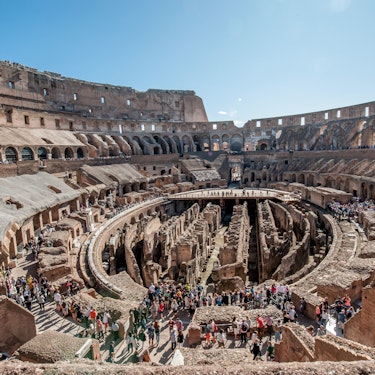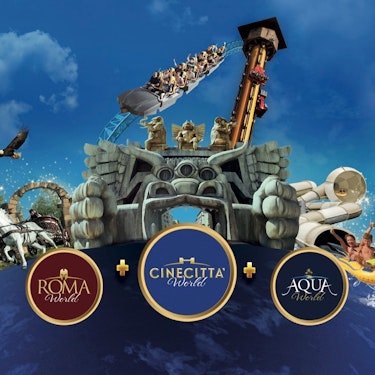More about: Vatican and Colosseum Combo Tickets in Rome
Both the Colosseum in Rome and the Vatican Museums receive thousands and thousands of visitors every day, so you need a ticket to enter both sites. If you don't want to spend hours queuing or risk being turned away, it's a good idea to book in advance. Here are the best combined ticket options to save you money and time when organising your visit.

Offer: Tickets to Colosseum, Roman Forum and Palatine Hill + Vatican Museums and Sistine Chapel
Colosseum, Vatican and Pantheon with a single 3-day pass
Skip-the-line tickets to the Colosseum, Forum, Palatine Hill, Vatican Museums, and access to the Pantheon, with audio guide and introductory video included.
This complete ticket pack for Rome guarantees you priority access to the two essential centres of the Eternal City over three days. First, Ancient Rome: stroll through the Forum, climb the Palatine Hill and explore the Colosseum at your own pace after watching a 25-minute multimedia video that puts its history into context. Then, the Vatican: skip the queues at the Vatican Museums to admire the Sistine Chapel and use the included audio guide to discover every corner of St. Peter's Basilica.
The pass is rounded off with access to the Pantheon, a perfect extra for understanding Roman architecture, and the flexibility to schedule each visit as you wish within a 72-hour period from activation. The assistants at the office in Piazza d'Ara Coeli will help you coordinate schedules and optimise your days.
Recommended if... you want to cover the most important sights in Rome — Ancient Rome and the Vatican — in a single package with guaranteed tickets, no queues and maximum freedom to organise your own itinerary.
Prices for combined tickets to the Colosseum and the Vatican
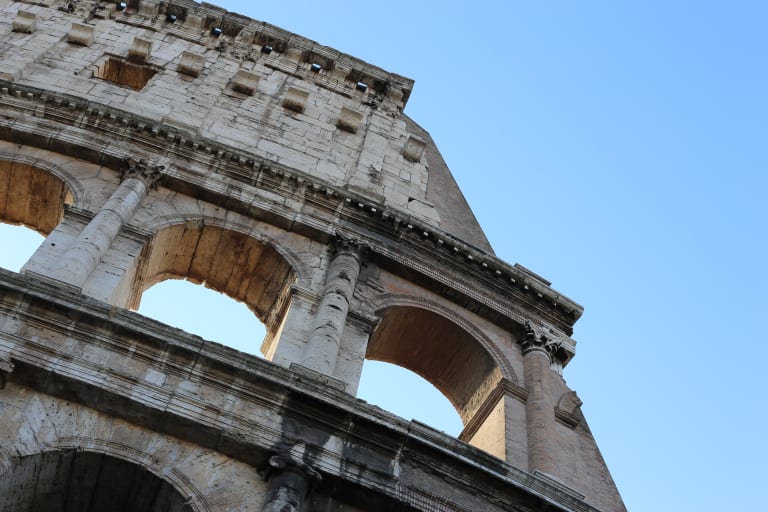
You can purchase tickets to the Colosseum and Roman Forum + Vatican Museums and Sistine Chapel for a price starting at €103 This ticket package will allow you to enjoy the most emblematic monuments of the Italian capital, such as the Vatican Museums and the Sistine Chapel, the Roman Forum, the Palatine Hill and the Colosseum.
All tickets are included and can be used during 3 days. I recommend this option if you want to explore the city and its attractions at your own pace, spending as much time as you like at each one.
It is best to book this option in advance and online so that you can compare times and availability and, above all, so that you don't end up paying for separate tickets after queuing for a long time at both ticket offices. You can also book a guided tour of the Vatican and a guided tour of the Colosseum separately, but doing so in combination will save you time and money.
What is included in the combined ticket for the Colosseum and the Vatican

Tickets to the Colosseum, Roman Forum and Palatine Hill
The Colosseum ticket is a comprehensive ticket that also includes a visit to the Roman Forum, the huge esplanade with archaeological remains that was once the epicentre of the city's social life, and the Palatine Hill, the most central of Rome's seven hills and one of the oldest parts of the city. These three sites are very close to each other and are included in the tour.
Tickets to the Vatican Museums and St. Peter's Basilica
When we talk about tickets to the Vatican, we are actually referring to tickets to the Vatican Museums, one of the largest art collections in Europe. The area where Vatican City is located has two main points of interest: the Museums and St. Peter's Basilica, which is free to enter. The combined Vatican and Colosseum tour also includes a visit to the Basilica, with an audio guide included so you can visit the largest Christian church in the world at your own pace.
Extra: admission to the Pantheon
In addition, during the 3 days of validity of this pass to see the highlights of Rome, a visit to the Pantheon, one of the best-preserved monuments of ancient Rome, is also included. With your fast-track ticket, you will skip the queues and discover the history of this temple turned church, famous for its monumental dome and central oculus.
Is it worth buying a combined ticket?

Yes. If you had to buy both tickets separately, you would end up spending more time and money. Here is a summary of the main advantages of buying the combined ticket for the Colosseum and the Vatican:
- Save hours of waiting (yes, hours, plural) that form at both sites, as by booking your tickets in advance you can access both sites immediately and in perfect order.
- Better organisation. I particularly like to leave room for improvisation when I travel and let myself be carried away by the city in question. However, there are always places you have to see, and the fact that they are so legendary means that they are full of tourists and visiting them can sometimes be stressful (you have to calculate the time, how to get there, the opening hours, the waiting time, etc.), which can even spoil the experience of the visit.
- Save on both tickets: By purchasing the package deal for these Rome essentials, you'll spend less money than if you bought them separately. Check it out and let me know what you think!
Roma Pass and Omnia Card: another way to save on your visit to the Colosseum and the Vatican

Another option for taking advantage of the tourist pass at these attractions is the Roma Pass and Omnia Card. For around €149, you can choose to enter two tourist attractions for free, including, of course, the Colosseum and the Vatican, among many others. In addition, with this card you can use all public transport for free (except trains), you have access to the city's tourist buses and discounts at many other monuments.
- You can read all the detailed information here in the posts about the Rome Pass and the Rome Omnia Card.
Other passes that include tickets to the Vatican and the Colosseum in Rome

In addition to the Roma Pass and Omnia Card, there are other tourist passes that may interest you:
- Roma Super Pass: admission to the Vatican, Colosseum and transport included - from €139 Includes St. Peter's Basilica, the Sistine Chapel, the Colosseum, the Roman Forum, the Palatine Hill, the Vatican Museums, the Pantheon and unlimited public transport for 3 days. It also includes an audio guide and a video about ancient Rome.
- Roma Pass: transport and access to two main attractions - from €63 With this 72-hour pass, you can choose 2 attractions from a long list, including the Colosseum, the Roman Forum, the Palatine Hill and the Capitoline Museums. It also includes unlimited public transport, but beware: in this case, the Vatican Museums are not included.
If you're still unsure which one to choose, this article gives you all the information you need about tourist cards in Rome depending on the type of trip you're planning.
How to buy tickets for the Colosseum and the Vatican separately
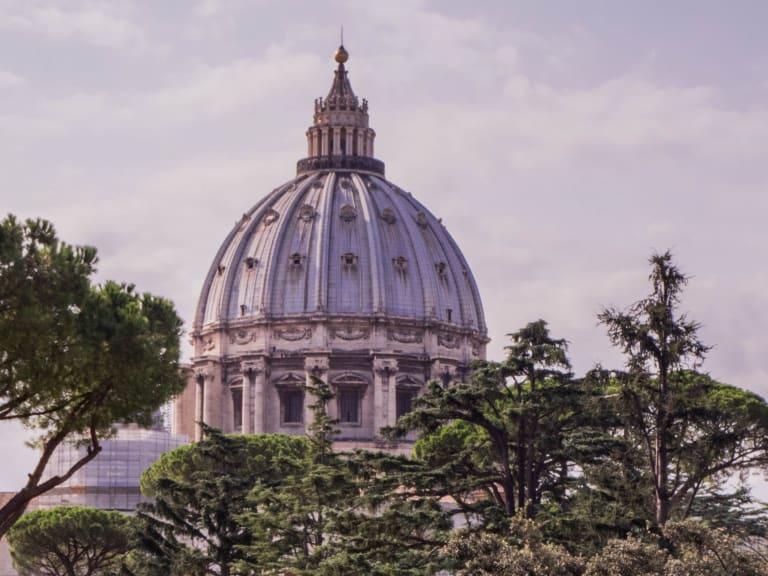
For both the Colosseum and the Vatican, you can buy tickets online on official tourism and culture websites, such as Hellotickets.
The Colosseum also has physical ticket offices where you can buy tickets directly, although you may encounter long queues and endless waits. For the Vatican, however, you can only buy tickets that give access to the dome of St. Peter's Basilica in person.
If you don't want to miss out on these gems of Roman history, the best option is definitely to purchase your combined tickets online in advance. That way, you don't have to worry about timing and money.
How to get discounts on tickets to the Colosseum and the Vatican
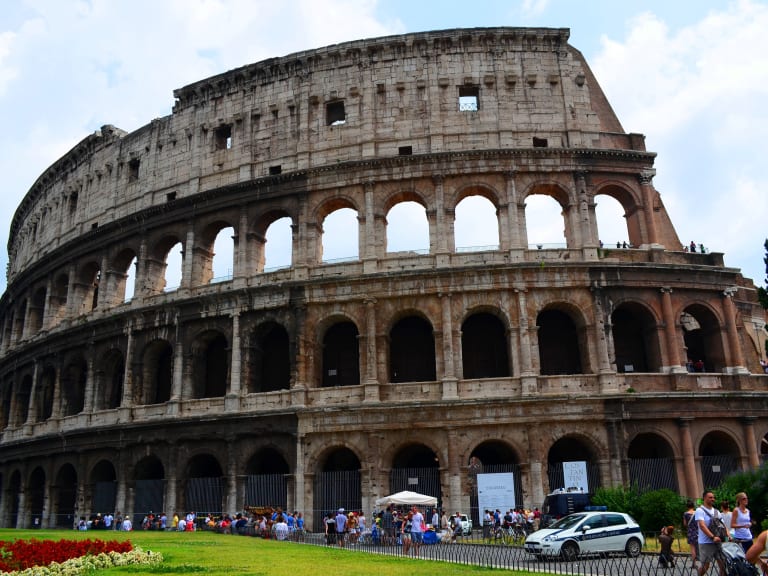
The following people are eligible for discounts:
- Accredited Italian teachers
- Teachers specialising in art history who accompany a group can obtain reduced-price or free admission
- Disabled persons and their companions who are members of social or health services
- Official EU tourist guides and interpreters, provided they are entering in the course of their professional activities.
- Accredited art history and secondary school teachers
- Teachers and students of architecture, cultural heritage conservation, education sciences and literature or literary subjects with an archaeological or historical-artistic focus
- Children under 18 accompanied by an adult can enter at reduced prices
In addition to these benefits for those who meet the above requirements, the Colosseum opens its doors free of charge on the first Sunday of every month. However, the queues are usually endless, so if you decide to go for this option, I recommend getting up early and arming yourself with plenty of patience.
Another option: take a guided tour of the Colosseum and the Vatican
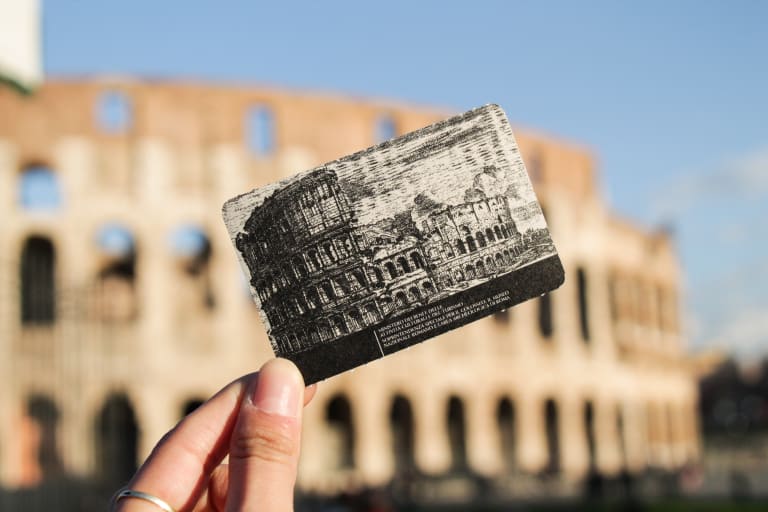
The good thing about buying a guided tour with tickets included for the Colosseum and the Vatican is that you have very little to organise; you just need to be at the meeting point at the agreed time and follow the guide through the headphones they will provide you with. Even so, I'm going to explain a few things you should know:
The meeting point
The meeting point may vary depending on the time of year, but it will be a central location such as Piazza del Risorgimento, so you will have no problem getting there either on foot if you are staying in the centre of Rome (the city is generally quite accessible on foot) or by public transport. In any case, once you have booked the tour, you can ask how to get there and they will be happy to help.
Ticket dates
When booking tickets for the Colosseum and the Vatican on the combined tour, you must do so for a specific day. If something unexpected comes up, cancel 24 hours in advance for a full refund. The tour organisers will take care of coordinating the times for visiting each of the stops on the tour. However, the departure time will be early, so be prepared to get up early.
Duration of the tour
The tour will last around nine hours in total for both places. Of those nine hours, between two and three will be spent at the Colosseum and the same at the Vatican Museums. I'm not going to lie to you: it's going to be an intense day, but in my opinion it's better than doing the Colosseum on one day and the Vatican on another.
Language
This tour includes headphones with audio available in several languages: Spanish, English, French, German and Portuguese.
Information about food
Food is not included, so although you will be given a break for lunch, I recommend that you bring some snacks and a couple of drinks in your backpack so that you can satisfy your hunger if necessary. However, you will find several food stalls and restaurants in both areas. These are the best places to eat near the Vatican and these are the best places to eat near the Colosseum.
Visiting the Colosseum and the Vatican with children
If you are considering doing this tour with children, bear in mind that they may end up **very tired...**If they are interested in art, there will be no problem because there will be lots to see, but if they are too young, it is better to choose another option for your visit to the Colosseum and the Vatican. If you are interested, you can read these tips for visiting the Colosseum with children.
About the Colosseum
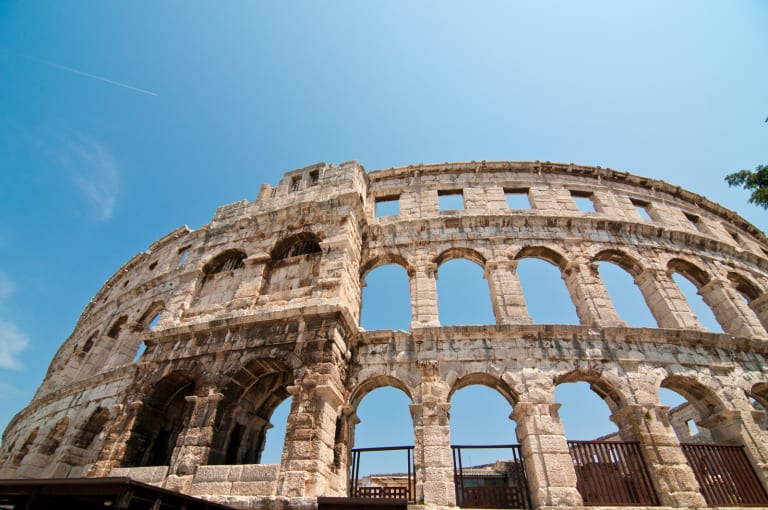
The Colosseum represents Rome's past, a Rome of grandeur, emperors and gladiators, but also a Rome of the people, as it was precisely in this amphitheatre that the Roman population gathered to watch the famous gladiator fights and wild animal battles. It is definitely something you must see if you go to Rome.
Interesting facts
- It is the most visited monument in Italy.
- It was built around 72 BC by Emperor Vespasian, who was a professional soldier who later became emperor.
- In case you were wondering, it owes its name to the statue of Nero's Colossus that stood in front of the amphitheatre.
- Although only 3,000 people can now access it, its stands had a capacity for 55,000 spectators. If it were a football stadium, its capacity would place it fifth among the largest in Italy.
About the Vatican

The Vatican, for its part, exudes magnificence and ostentation; it is a present marked by the power of religion. The Catholic Church has its headquarters in the city of Rome (specifically in Vatican City, which is considered a separate state) and it is impossible not to be awestruck by its wealth.
Don't miss St. Peter's Basilica, its dome, St. Peter's Square and the Vatican Museums, where you will find the wonderful Sistine Chapel. I'll also tell you what you need to see in the Vatican Museums to make the most of your visit:
Interesting details
- All the frescoes in the Sistine Chapel (especially 'The Creation of Adam' and 'The Last Judgement') by artists such as Michelangelo and Botticelli.
- Don't miss Raphael's paintings such as 'The Transfiguration' (his last painting), 'The Expulsion of Heliodorus from the Temple', 'Parnassus' and 'The School of Athens'.
- Its museums house world-famous sculptures such as 'Laocoön and His Sons' and 'Apollo Belvedere'.
- In St. Peter's Basilica, you will find Michelangelo's famous 'Pietà'.
- The view from the top of the dome, which is open to the public, is probably one of the best in Rome.
Practical tips for your visit to the Colosseum and the Vatican

What to wear
If you go in summer, Rome is very hot. Specifically, temperatures are high in the Roman Forum and there is no shade, so you will need to bring water, sunscreen, a hat and sunglasses.
In the Colosseum, there are parts that are in the shade, but there is also more sun. You might think: great, I'll wear the coolest clothes I have on the day of the visit. Wrong! A tip for visiting the Vatican: you will not be allowed to enter with bare shoulders or clothing that is too short. You will need to carry a scarf in your backpack and put it on to enter St. Peter's Basilica and the Vatican Museums.
An essential tip for visiting the Colosseum and the Roman Forum: wear comfortable shoes, otherwise the nine-hour tour can be very long. Although it may seem obvious, do not wear new shoes.
Do not carry a large rucksack or luggage, as you will not be allowed to enter either site with these items.
Do not stray from the group
Keep an eye on the time during the tour. They will wait for you if you are a little late, but that means not only will you delay the whole group, but you will also have less time at the next tourist attraction and will have to see it more quickly. Organised tours are not the time to buy gifts or explore the area on your own; you will have time for that later.
Photographs
Don't forget to charge your mobile phone and camera. I'm not saying this (at all) because you're going to be looking at your phone; it would be a shame if you did. I'm saying this because if you're going to take photos of the tour (and not taking them will be very difficult), you may run out of battery (you're going to see a lot of things). Personally, what I do when travelling, if I don't have my camera with me or don't want to carry too much and am going to use my mobile phone, is to put my phone in aeroplane mode (so I can take advantage of the opportunity to disconnect) and use only the camera.
If you're interested in visiting the Colosseum and the Vatican, you'll also be interested in

With this option, you'll see the two great wonders of Rome, but there's so much more to see. With the peace of mind of having covered the essentials, my advice is to organise your visit for the rest of the days to locate the fountains, views, palaces and most important squares of the Eternal City and devote yourself to visiting them on foot.
If, after this tour, you are looking for more impressive monuments, don't miss the Pantheon, Castel Sant'Angelo or churches such as Santa Maria Maggiore or Santa Maria in Trastevere. If, on the other hand, what impresses you most about this tour are the Vatican Museums, be sure to visit the Borghese Gallery. If you like, you can read more information in my post about Borghese Gallery in Rome: Tickets and Tours
If you want a more comprehensive guided tour of the city, I have also prepared a post about my favourites, so read here everything you need to know about Top 11 tours of Rome.










